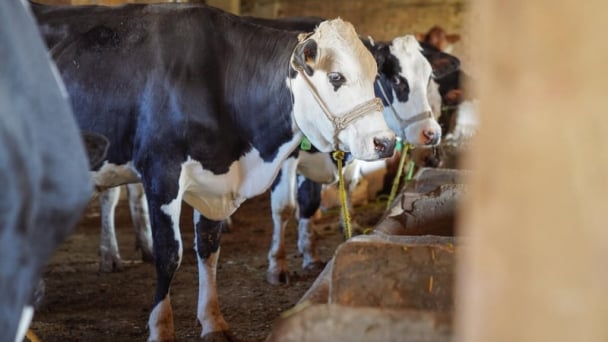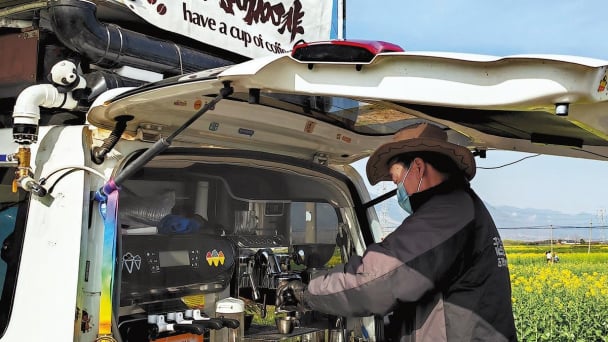May 22, 2025 | 07:04 GMT +7
May 22, 2025 | 07:04 GMT +7
Hotline: 0913.378.918
May 22, 2025 | 07:04 GMT +7
Hotline: 0913.378.918
Consumers may face even higher wheat prices in the second half of 2022, as importers, who have so far supplied cargo purchased at cheaper prices several months ago, saw wheat prices hit a decade-high in May. overcoming the costs.
Analysts, traders and mill owners say global wheat consumption in July-December could fall by 5%-8% from a year ago, much faster than the US Department of Agriculture’s forecast of a 1% contraction .
Erin Collier, an economist at the Food and Agriculture Organization of the United Nations, said: “Demand for wheat for animal feed is going to decline in Europe and China. Demand for wheat for human consumption is also slowing in major importing countries around the world. has occurred.”
“High prices have raised food security concerns in parts of Asia and Africa where countries have not been able to secure adequate supplies from the international market.”
Millions are facing food costs and insecurity after Russia’s invasion of Ukraine and grain prices hit an all-time high due to unfavorable weather in major exporting countries.
Benchmark wheat futures jumped 40% this year to record highs in March, before retracing recently, though physical prices remain high.
Wheat consignments from the Black Sea region are quoted at around $400-$410 per ton, which includes the cost and freight for delivery to the Middle East and Asia. Prices are below a peak of around $500 a tonne reached a few months ago, but remain well above last year’s average of around $300.
“Wheat supplies are still very tight,” said Ole Hau at brokerage Icon Commodities in Sydney. “We are not sure how much wheat is going to come out of the Black Sea and other exporting countries have unfavorable weather.”
FAO’s Collier told Reuters that countries that may have to deal with wheat imports include Yemen, South Sudan, Sudan, Syria, Ethiopia, Afghanistan and Sri Lanka.
As rising costs hit household budgets, protests have erupted around the world, with people taking to the streets from China and Malaysia to Italy, South Africa and Argentina.
In Indonesia, the world’s second largest wheat buyer, consumption has already fallen in the first five months of 2022 and a major decline is expected as higher costs feed through the supply chain.
Yan Aisa Allamanda, a 37-year-old baker in Jakarta, is paying around Rs 10,000 ($0.6720) per kilogram for wheat flour, up from around Rs 8,200 earlier this year.
“I had to increase my selling price … but I fear the higher prices will discourage consumers,” she said.
Switch out
As consumers cut back on purchases, bakers and noodle makers are replacing wheat with rice.
“Wheat flour prices are almost at par with rice – the transfer will happen automatically,” said Franciscus Velirang, president of the Indonesian Flour Millers Association.
He noted that the last time there was a significant increase in wheat flour prices, Indonesia’s consumption had fallen by 4.5%.
While wheat prices have bounced, Vietnam’s 5% broken rice was priced at around $404 a tonne, largely unchanged from late 2021.
Brazil, the biggest market for US wheat, saw purchases fall by more than 3% in the January-June period, even though the country paid 20% more for the staple, the data showed.
“In the northeast of Brazil, consumers may be looking to replace wheat products with regional products such as tapioca,” said Roberto Sandoli, senior risk manager at Hedgepoint Global Markets.
Animal feed
Prices of red-hot wheat are also changing, the material livestock farmers use for animal feed.
French farm office FranceAgrimer has forecast that wheat fodder demand could fall 13% to 3.9 million tonnes in 2021/22 to 2022/23.
“The decline in EU wheat consumption is primarily the result of much cheaper corn,” said Strategy Grains analyst Helen Duflot. “Then of course, there’s the economic issue.”
In Vietnam, one of the fastest growing animal feed markets in the world, rice is replacing wheat.
A purchasing manager at a mill in Ho Chi Minh City said he has been asked by the government to source options amid supply chain disruption.
Bangkok-based traders said Thailand had earlier this year raised its corn import quota from 54,700 tonnes to 600,000 tonnes and cut import duties to ease a tight feed market.
In response to changing feed use, the USDA in July lowered its global wheat consumption forecast for the 2022/23 marketing year to 784.22 million tons, down from the June estimate by 1.77 million tons and 6.29 million tons from the prior year.
Black sea hit
Buyers in Africa and the Middle East have been more affected than other consumers by Black Sea disruptions since Russia’s invasion of Ukraine, and have been forced to switch to higher-value suppliers such as Germany and France.
Black Sea supplies are expected to resume after Russia, Ukraine, Turkey and the United Nations signed a deal last week to unlock Ukrainian grain. The first grain ship to leave Ukraine was safely anchored off Turkey on Tuesday.
But the market is skeptical about the more meaningful return of the Black Sea trade.
“We are not very optimistic about the supply of wheat to Ukraine,” said a Singapore-based trader. “With the current war it is not in Russia’s interest to allow large quantities of grain exports from Ukraine.”
($1 = Rs.14,880.00000)
(Reuters)

(VAN) Attempts to bring down the price of the Japanese staple have had little effect amid a cost-of-living crisis.

(VAN) Fourth most important food crop in peril as Latin America and Caribbean suffer from slow-onset climate disaster.

(VAN) Shifting market dynamics and the noise around new legislation has propelled Trouw Nutrition’s research around early life nutrition in poultry. Today, it continues to be a key area of research.

(VAN) India is concerned about its food security and the livelihoods of its farmers if more US food imports are allowed.

(VAN) FAO's Director-General emphasises the need to work together to transform agrifood systems.

(VAN) Europe is facing its worst outbreak of foot-and-mouth since the start of the century.

(VAN) The central authorities, in early April, released a 10-year plan for rural vitalization.